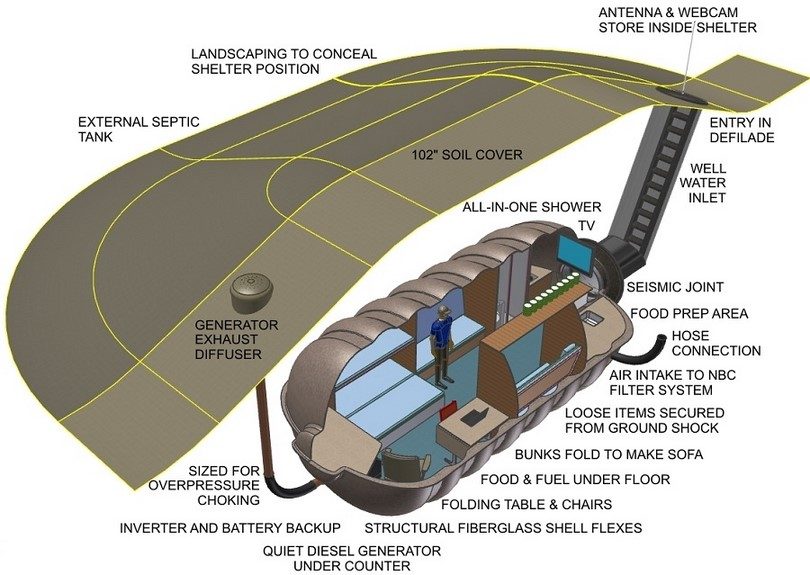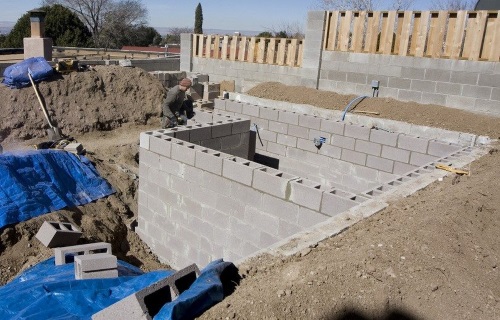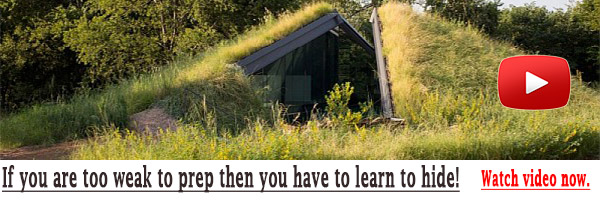Building a bunker could be a great choice as there are at least dozen SHTF scenarios where your life can be saved by having an underground bunker to hide and spend some time in. So, the idea of making a bunker is great for every survivalist enthusiast and a definite must have for every experienced survivalist. You will come to know that building a bunker isn’t as easy as it might sound, but after you are all settled and everything is done, you will be at peace knowing that no matter what happens, you and your family will be safe.
In order to help you get started and get an insight of what you need for building your own shelter, we are leading you with our step-by-step instructions on how to build a bunker.
HOW TO GET STARTED?
Regardless of what you are building, you need a permit; that means that the entire construction process must be legally allowed and in accordance with your state’s law. Otherwise, you might be facing unwanted law regulations and law suits – and that is the last thing you need.
Before starting with building your bunker, there are many things you need to take care of so, to make sure you won’t lose track of something important, you should take a look at this complete guide for building bomb shelters.
One of those things is making sure that you are legally allowed to dig a big hole in your backyard; maybe there are gas or water pipes buried in your backyard and that is also why you need to check everything up legally. Once you are set with that and allowed to dig the hole, you can start digging.
MAKE A PLAN
No matter what you are up to, as a survivalist, you know you first need to make a plan – the things are not any different with building a bunker – it’s quite the opposite as you will need to work out every detail before even starting with digging.
There are numerous factors to consider: you need to determine what kind of soil do you have in your backyard or find out if you will need to dig through the concrete in order to build an underground bunker.
Some houses have concrete foundation that is deep dug into the ground, so making a bunker in that case would require much more work and planning.

When all factors are considered, including mold, type of soil, ventilation, radiation and natural gas pockets that may or may not exist in your backyard, you can then determine whether you want to build a bunker under your home, or you might consider building a shack under which you will then build an underground bunker.
The option of having your bunker build somewhere else instead of building it under your home has some advantages as you won’t have to worry about breaking through the concrete or coming across gas installations or accidentally stumble upon electrical installations, which can be very dangerous.
Another thing to consider before starting is the weather conditions in your country, especially cold intervals as it might happen that the soil collides on your bunker if your plan is not all worked out.
If you are not a skillful in planning construction projects, you might even want to consider hiring someone who will help you out with planning, making a plan of your electric installation net as well as determining whether or not building a bunker under your home is a smart idea. Also, a guide designed by specialists in self-defense will come in handy and you can check one of the best here.
ADVANTAGES OF HAVING A BUNKER BUILT UNDER YOUR HOME
So, you’ve heard of some disadvantages of building an underground bunker under your home, but what are the advantages? There are many, in fact. If it is determined that building a bunker under your home is perfectly safe and doable, then you will have less troubles in providing electrical energy for your bunker, and the fact is that you will need electricity.
However, you can always turn to portable generators designed for home usage and pick one that runs on batteries or fuel. That way you won’t need to worry about not having electrical energy in your bunker.
So, even if you don’t build the bunker just under your house, you could still have sources of electric energy. But what about the entrance? You are not spending much time in the shack, are you?
So building a bunker under a shack could be potentially useless unless you decide to build a tunnel leading from your home to the underground bunker, which requires more planning and more work although it is a fairly good idea and an interesting project.

The best is that the entrance to your bunker is easy accessible to you so in case you are not able to exit your house in order to safely enter the bunker, you can access your bunker through your house; preferably through your basement. Another question that might not go in favor of having the only entrance to your bunker through your house is: what if the house collides?
Well, that wouldn’t be as good for you as you would remain trapped in the bunker. To prevent this potential scenario, you should consider building another safety entrance, covering it up from curious eyes.
DIGGING
So, if you are settled legally and you are familiar with all zone requirements, also having all the info about underground water, gas pockets, type of soil and weather conditions, you can actually start with digging.
In order to speed up the process, it is recommended that you use machinery, and when we say “machinery”, we mean heavy machinery – hard core style. Or else you might end up digging longer than you might want to.

As you are digging, you need to know that the soil is well compacted, so naturally the more you dig, the more soil you will have out from the hole. Keep the soil far from the hole and save it for later as you will certainly need it.
In accordance how large you want your bunker to be, you will dig the hole to match your plan and your construction and once you are done digging, you can move on with building a structure for your bunker.
If you don’t have the required machines to help you out with digging, you can always go old school and use a shovel. There is another option: renting the equipment needed, as you can rent machinery or hire someone with appropriate machinery to help you out.
STRUCTURE
Structure can be built by your own hands, but if you want to speed up the process and if you are planning on building a smaller bunker, you can purchase a large shipping crate to serve the need. You need to make sure that the hole you’ve dug is large enough for the crate to fit and yet not too big so the soil won’t come colliding.
You can also have a construction ordered as a montage object then later just put it into the hole, again making sure that the hole is in line and suitable for the structure to fit.
You will again need a heavy machinery to put the crate or your structure into the hole, so you can again rent the machinery as you will certainly need it.
On the other hand, you can build structure by yourself and in that case, you won’t need to purchase a crate or have the montage object ordered to be made, which also means that you will save some money on renting the machinery as you won’t need it.
If you are going to build the structure by yourself, but that would mean that you will need to do more planning as the material used for building a bunker is very important. To get everything settled you first need to learn a few basics on how to build an underground bunker when it comes to material used for making the structure by yourself.

For starters, although the wooden structure is a true classic to choose for building your structure, you need to know that the wood will certainly decompose if not previously treated.
There are also other downfalls regarding the wood as material for your structure: even if the wood is treated to be permanent, the wooden construction is not suitable for an underground construction as the toxins are being released gradually into the soil, and that is everything but good for the bunker construction.
The wood is also not strong enough to support an underground building and it is not as long lasting as concrete.
Speaking of concrete, this material is maybe the best choice for your structure as it is cost-effective, long lasting and strong enough to support an underground construction – basically you will get everything you need from picking concrete for your bunker structure material.
After choosing your material, you will first need to start from building the floor foundation, then move further onto making the walls for your underground bunker.
PASSAGES
Building passages from your home to the bunker can also be useful as you will have an alternative way of accessing the bunker when you need it. To make sure the passages are completely safe, you will need to secure them and to do so, you will need to pick the right structure for your passages.
One solid option for supporting the passages is using the scaffolding poles that will give the small sized rooms just enough support needed, but avoid having these poles used for supporting the ceiling as they are not as safe for supporting larger rooms, so there is a probability that the ceiling might collide in that case.
If you are not sure which construction would come as great for supporting the ceiling, you can feel safe with using pillars made of bricks. Brick wood could also be used as a great structure for the bunker as it is far better than wood, but concrete is probably the leading material for such projects.
OBSTACLES
Watch out for obstacles such as underground water, gas pockets, electric circuits and of course rocks – there are plenty of massive rock blocks beneath the ground and you need to make sure that none of those factors could come in the way of building your underground bunker.
If you come across the underground waters, the best thing to do is just to try finding another spot for digging as there isn’t anything you can do to make the water disappear; the positive thing is that if you have found the source of underground water, you could take advantage of it and make it your main SHTF water supply source, of course, you will need to build a required system for water supplying, but if drinkable and ecologically correct, underground water is your SHTF treasure.

However, if you come across a massive rock, you will need to find another place for digging or get to work and start drilling the block. That will, of course require more effort, more time, more money, energy and you will once again need to rent heavy machinery to get rid of the block.
Another thing you can do to make sure that the rock won’t come in the way of your bunker is to build another structure around the massive rock and widen the hole so that your originally planned structure could fit, so you would be able to continue with building your bunker.
If that option seem like a lot of work, you can pour in some water into the rock cracks and wait for the water to freeze – the block will break easily afterwards. This will only work on low temperatures, so that might not be an option for you either.
Again, you will need to plan out every detail, so you wouldn’t end up going through twice as big effort than originally planned.
SAFETY
One of your enemies when it comes to protecting the bunker is the bad weather. Rain is good for crops and soil, yes – but it does not suit your bunker that well. At least if the bunker is not secured to be water-proof.
To make sure the water won’t come barging into your bunker, you can use some sort of the water-proof sheet, which can be easily put over the ceiling of your bunker and protect it from the water.

Thinking about different SHTF scenarios, there comes the need for thinking about sound-proofing your bunker. There are lots of potential scenarios where you wouldn’t want your bunker to be discovered because you weren’t whispering the entire time spent underground. Also, you would probably want to keep your bunker a top secret, so that is where hiding the entrance comes in mind.
If your bunker is not built inside of your house or in the basement, or if you have given up on building a small shack on top of the bunker’s entrance, which is a fairly great way to hide your SHTF hiding place, it is recommended that you find another way of hiding the entrance to your underground bunker.
For starters, the bunker shouldn’t be built in the middle of the open, but rather covered up with bushes or trees. One of the options is to plant trees and bushes all over your backyard including the spot where the entrance to the bunker is.
Some have seen this problem coming for a long time and changed their entire way of life by going off-grid. They have found alternative sources such as solar, wind and diesel to power their homes and machinery. A majority of us, who have not gone off-grid, are making a concerted effort to avoid dependence on this ailing infrastructure and preparing for life without it.
SURVIVAL FEATURES
There is no surviving without water, so another thing to consider alongside building a bunker is to build your own water supply system. If you were lucky to find the underground water, you can use that and build a water supply system leading to your bunker for safe and easy accessibility once the SHTF scenario occurs. You can also use the rain water and install the rain water barrel system that will collect the rain water for you to use it later. Having water purifiers and life straws is a great back up option to have around the bunker.
Keep in mind that you will also need to plan out your food supplies and having a 3 days emergency kit around is a fantastic idea. You will have to find a way to bring electricity to your bunker if you believe that you need it (and you certainly do). It is recommended to hire an electrician for all electricity related work, just to be safe.
Ventilation is another important aspect for having a fully functional bunker on long tracks, so do your research and find the most suitable ventilation system that will meet all your needs, so that your underground bunker could work perfectly once SHTF scenario occurs. You should also have a plan B in mind and this means employing other safety measures like protection masks – click here for more details.
To make sure our instructions are visually supported, here are some videos that will help you gain a bigger picture on how to build an underground bunker. You will be able to have a clear overview of how constructing a bunker should look like:
Before you start building a bunker, make sure that all safety regulations are well thought through and make sure your plan will work perfectly as your survival might depend on how you build your underground bunker. As a survivalist you are surely aware of how important preparation is, so prepare yourself, get ready and start digging!
One of the best ideas suggested through The Lost Ways is the construction of bunkers. These bunkers have the potential to stand the impact created by the most devastating earthquake or missile attack. On the other hand, the readers will be able to learn how to preserve their food in a natural manner. They can also get to know about effective tips, which can be used to preserve the precious water supplies. Then we will be able to use them in the case of a disaster to survive.
First of all, The Lost Ways would convince readers that the natural disasters are inevitable. It will give them an excellent insight about the disasters that could take place in the future. Therefore, it is extremely important for all the human beings to stay prepared to face a disaster, which could happen at any given point of time. In the second part of this book, the readers will be able to discover the lessons learned by humanity when they encountered disasters in the past. Every disaster teaches us a lesson, and it is better to have a clear understanding of these lessons as they can be helpful in the future.
Books can be your best pre-collapse investment.
The Lost Ways (Learn the long forgotten secrets that helped our forefathers survive famines,wars,economic crisis and anything else life threw at them)
Survival MD (Best Post Collapse First Aid Survival Guide Ever)
Conquering the coming collapse (Financial advice and preparedness )
Liberty Generator (Build and make your own energy source)
Backyard Liberty (Easy and cheap DIY Aquaponic system to grow your organic and living food bank)
Bullet Proof Home (A Prepper’s Guide in Safeguarding a Home )
Family Self Defense (Best Self Defense Strategies For You And Your Family)
Survive Any Crisis (Best Items To Hoard For A Long Term Crisis)
Survive The End Days (Biggest Cover Up Of Our President)
Drought USA (Discover The Amazing Device That Turns Air Into Water)
David Dawson is a retired security specialist with over 20 years of experience. He worked for a secret manufacturing facilities and hospitals in Illinois. David’s responsibility was to protect people in case of any disaster or cataclysm that might occur. Now he keeps on doing it through teaching others about how to prepare and survive flood, earthquake or even war. survival-mastery.com




